In the realm of culinary tools, there exists a humble yet indispensable hero: the muffin pan. Imagine a versatile vessel, a metallic symphony of curves and crevices, patiently waiting to cradle your baking creations.
This unassuming kitchen essential, with its regimented rows and individual compartments, holds within its grasp the promise of infinite delights.
From decadent chocolate muffins that melt in your mouth to savory quiches bursting with flavor, the muffin pan stands as a testament to the boundless creativity of bakers worldwide.
It is not merely a receptacle for batter; it is a canvas upon which culinary dreams are painted, each cavity a miniature stage for delectable masterpieces to unfold.
So, what exactly is a muffin pan? Let us embark on a tantalizing journey to uncover the secrets held within its metallic embrace.
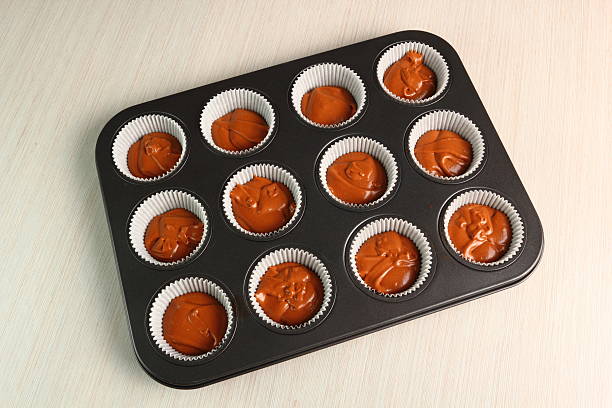
What Is A Muffin pan
A muffin pan, also known as a cupcake tin or muffin tin, is a kitchen utensil used for baking muffins, cupcakes, and other small baked goods.
It typically consists of a metal tray with multiple cup-shaped depressions, each designed to hold a single portion of batter. Muffin pans come in various sizes and shapes, including standard 12-cup pans, mini muffin pans, and jumbo muffin pans.
They are essential for evenly baking and shaping muffins and cupcakes, providing uniformity in size and ensuring easy removal of baked goods without sticking.
Whether you’re a seasoned baker or a novice in the kitchen, a muffin pan is a versatile tool that allows you to create delicious treats for any occasion.
History and Evolution of Muffin Pans
Origins of the Muffin Pan
The history of the muffin pan is deeply rooted in the evolution of baking utensils and culinary techniques. Muffins, a type of quick bread, have been enjoyed for centuries, with recipes dating back to ancient times.
However, it wasn’t until the late 18th and early 19th centuries that the concept of a dedicated muffin pan began to emerge. Early muffin pans were simple, often made of cast iron or tin, and consisted of individual cups or molds for baking muffins.
These early designs lacked the convenience and uniformity of modern muffin pans but served the purpose of shaping and baking the batter more efficiently than free-form methods.
Development of Muffin Pan Designs Over Time
As baking technology advanced and the demand for baked goods grew, so did the innovation in muffin pan designs. In the late 19th and early 20th centuries, the industrial revolution spurred the mass production of kitchenware, including muffin pans.
Manufacturers began producing pans with multiple cups arranged in rows, allowing for larger batches of muffins to be baked simultaneously.
The materials used in muffin pan construction also evolved over time. Cast iron gave way to lighter and more affordable materials such as aluminum and steel. Non-stick coatings were introduced to facilitate easier release of the baked muffins and to simplify cleaning.
In addition to the standard muffin pan, specialized designs emerged to cater to specific preferences and dietary needs. Mini muffin pans, jumbo muffin pans, and silicone muffin pans became popular options, offering versatility and flexibility in baking.
Cultural Significance and Adoption Worldwide
The muffin pan’s cultural significance lies in its role as a facilitator of homemade baked goods, particularly in Western cultures. Muffins, once a humble breakfast staple, have evolved into a versatile snack or dessert enjoyed at any time of day.
The convenience and uniformity provided by muffin pans have contributed to their widespread adoption in households and professional bakeries alike.
The popularity of muffins transcends borders, with variations of this baked treat found in cuisines around the world. From savory cornbread muffins in the Southern United States to sweet blueberry muffins in Scandinavia, each culture puts its own spin on the classic recipe.
The muffin pan serves as a common tool in kitchens worldwide, enabling enthusiasts to experiment with flavors and ingredients to create unique interpretations of this beloved baked good.
Anatomy of a Muffin Pan
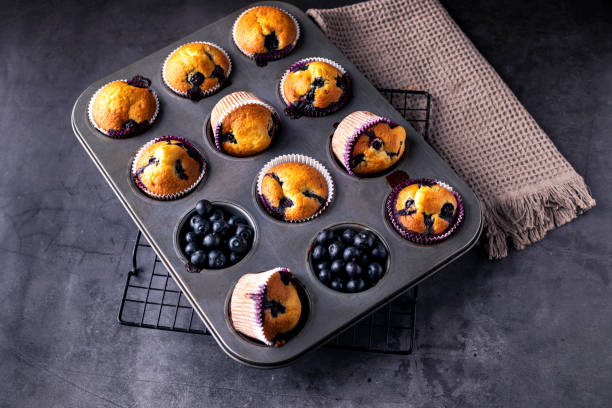
Basic Structure and Components
The muffin pan is a relatively simple yet essential tool in baking. Its basic structure consists of a rectangular or square-shaped tray with multiple indentations or cups arranged in rows. Each cup is designed to hold a portion of muffin batter during baking, resulting in evenly shaped and sized muffins.
Typically, muffin pans feature either six or twelve cups, although variations with more or fewer cups are also available. Each cup is uniformly spaced to allow for even heat distribution during baking and easy removal of the muffins afterward.
Modern muffin pans often include additional features for convenience and functionality. These may include extended rims for easy handling, reinforced edges to prevent warping, and non-stick coatings to facilitate the release of baked goods.
Material Variations: From Aluminum to Silicone
Muffin pans are available in a variety of materials, each with its own advantages and characteristics.
- Aluminum: Traditional muffin pans are often made of aluminum. Aluminum pans are lightweight, durable, and offer excellent heat conductivity, ensuring even baking of muffins. Many aluminum pans also come with a non-stick coating, making them easy to clean and reducing the risk of muffins sticking to the surface.
- Steel: Steel muffin pans are another popular option. They are typically heavier and more durable than aluminum pans, providing excellent heat retention for evenly baked muffins. Steel pans may or may not have a non-stick coating, depending on the manufacturer.
- Silicone: Silicone muffin pans have gained popularity in recent years due to their flexibility, non-stick properties, and ease of cleaning. Silicone pans are lightweight, flexible, and resistant to odors and stains. They are also dishwasher safe and can withstand a wide range of temperatures, making them versatile for both baking and freezing.
Each material offers unique benefits, and the choice often comes down to personal preference and specific baking needs.
Sizes and Shapes: Standard vs. Specialized Muffin Pans
Standard muffin pans typically come in two sizes: regular and mini. Regular-sized muffin pans produce standard-sized muffins, while mini muffin pans yield smaller, bite-sized muffins ideal for parties, brunches, or snacking.
In addition to standard sizes, specialized muffin pans are available to cater to specific preferences and recipes. Jumbo muffin pans produce oversized muffins, perfect for hearty breakfasts or indulgent treats.
Other specialized pans may feature unique shapes, such as hearts, stars, or flowers, adding a decorative touch to homemade muffins.
Furthermore, some muffin pans come with inserts or dividers that allow for the creation of filled or layered muffins, such as those with a cream cheese or fruit filling. These pans offer versatility and creativity in muffin baking, allowing enthusiasts to experiment with different flavors and presentations.
Types of Muffin Pans
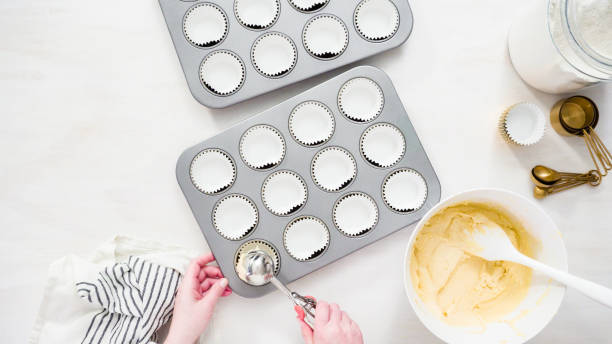
Traditional Muffin Pans
- Traditional muffin pans are the standard option for baking regular-sized muffins. They typically feature twelve cups arranged in rows of three by four, although six-cup pans are also common.
- These pans are available in various materials such as aluminum, steel, and silicone, each offering different benefits in terms of durability, heat conductivity, and ease of cleaning.
- Traditional muffin pans are versatile and suitable for a wide range of muffin recipes, from classic blueberry to savory cornbread.
Mini Muffin Pans
- Mini muffin pans are designed to bake smaller, bite-sized muffins, perfect for parties, brunches, or snacking. These pans typically feature twenty-four cups arranged in rows of four by six, although variations with more or fewer cups are also available.
- Mini muffin pans come in various materials, including aluminum, steel, and silicone, and often feature a non-stick coating for easy release of the baked muffins.
- Mini muffin pans offer versatility and are ideal for making a variety of miniature muffin recipes, such as chocolate chip, banana nut, or lemon poppy seed.
Jumbo Muffin Pans
- Jumbo muffin pans are designed to bake oversized muffins, perfect for indulgent breakfasts or hearty snacks. These pans typically feature six cups arranged in rows of two by three, although variations with fewer cups may also be available.
- Jumbo muffin pans are available in various materials, including aluminum, steel, and silicone, and often feature a non-stick coating for easy release of the baked muffins.
- Jumbo muffin pans offer versatility and are ideal for making a variety of oversized muffin recipes, such as cranberry orange, cinnamon streusel, or chocolate chunk.
Specialty Muffin Pans (E.g., Texas-sized, Square-shaped)
- Specialty muffin pans encompass a wide range of unique shapes and sizes beyond the traditional, mini, and jumbo options.
- Examples include Texas-sized muffin pans, which produce even larger muffins than jumbo pans, as well as square-shaped muffin pans, which create muffins with a distinctive square shape.
- Specialty muffin pans may also feature inserts or dividers for creating filled or layered muffins, such as those with a cream cheese or fruit filling. These pans offer versatility and creativity in muffin baking, allowing enthusiasts to experiment with different flavors, presentations, and serving sizes.
Functions and Uses
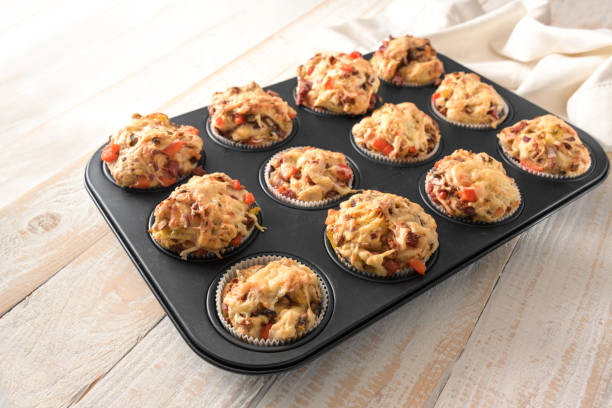
Baking Muffins and Cupcakes
The primary function of muffin pans is, of course, baking muffins and cupcakes. These pans provide individual compartments for portioning out batter, ensuring even baking and uniform shapes.
Muffin pans are essential for achieving the characteristic domed top and tender crumb of muffins, as well as the perfectly rounded shape of cupcakes.
They come in various sizes, allowing bakers to create standard-sized muffins, mini muffins, jumbo muffins, or even specialized shapes and sizes to suit their preferences and recipes.
Beyond Muffins
Muffin pans are incredibly versatile tools that extend beyond the realm of muffins and cupcakes. They can be used to make a wide range of other baked goods and savory dishes. For example:
- Mini quiches or frittatas: Muffin pans are perfect for making individual-sized quiches or frittatas, ideal for breakfast, brunch, or appetizers.
- Mini meatloaves or meatballs: Muffin pans can be used to portion out and bake individual servings of meatloaf or meatballs, allowing for easy serving and portion control.
- Frozen treats: Muffin pans can be used to create homemade frozen treats such as mini ice cream cakes, frozen yogurt bites, or fruit popsicles.
- Baked goods: Muffin pans can be used to bake a variety of other baked goods, such as mini pies, tarts, cornbread, or savory muffin-like rolls.
The versatility of muffin pans makes them indispensable tools in the kitchen, allowing for creativity and experimentation in cooking and baking.
Non-culinary Uses
Muffin pans have uses beyond the kitchen and can be repurposed for various non-culinary tasks:
- Organization: Muffin pans can be used to organize small items such as nuts and bolts, buttons, beads, or jewelry findings. The individual compartments keep items neatly separated and easily accessible.
- Crafting: Muffin pans can be used as paint trays for mixing colors or as molds for crafting projects such as homemade bath bombs, soap bars, or wax melts.
- Gardening: Muffin pans can be used as seedling starters for gardening projects, providing individual compartments for planting seeds until they are ready to be transplanted into larger pots or the garden.
The durable construction and compact size of muffin pans make them versatile tools for a wide range of tasks beyond baking.
Tips for Using a Muffin Pan
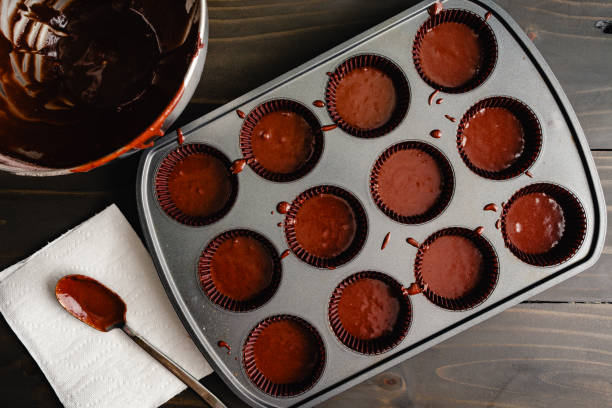
Proper Greasing and Lining Techniques
- Greasing: Ensure that the muffin pan is properly greased to prevent muffins from sticking to the pan. You can use butter, oil, or cooking spray to grease the cups. Make sure to coat the entire surface of each cup evenly.
- Lining: For added insurance against sticking, you can also line the muffin cups with paper liners. Choose high-quality liners that won’t stick to the muffins. Simply place one liner in each cup before filling with batter.
- Non-stick Pans: If you’re using a non-stick muffin pan, you may still need to grease or line the cups, depending on the recipe and the quality of the non-stick coating.
Filling Muffin Cups Correctly
- Even Distribution: Use a spoon or a scoop to evenly distribute the batter among the muffin cups. Aim to fill each cup to about two-thirds to three-quarters full, leaving room for the muffins to rise during baking.
- Avoid Overfilling: Avoid overfilling the muffin cups, as this can cause the batter to spill over the edges and result in unevenly shaped muffins.
- Uniformity: Try to distribute the batter as evenly as possible among the muffin cups to ensure that all the muffins bake at the same rate and have a consistent size and shape.
Adjusting Baking Times and Temperatures
- Temperature: Follow the temperature specified in your recipe, but be aware that different ovens may vary in accuracy. It’s a good idea to invest in an oven thermometer to ensure that your oven is at the correct temperature.
- Baking Time: Keep an eye on your muffins as they bake and adjust the baking time as needed. Factors such as the size of the muffins, the material of the pan, and the accuracy of your oven can all affect baking time. A toothpick inserted into the center of a muffin should come out clean or with a few moist crumbs when the muffins are done.
- Rotation: If you’re baking multiple pans of muffins at once, rotate the pans halfway through the baking time to ensure even baking.
By following these tips for using a muffin pan, you can achieve perfectly baked muffins every time, with minimal sticking and optimal texture.
Maintenance and Care
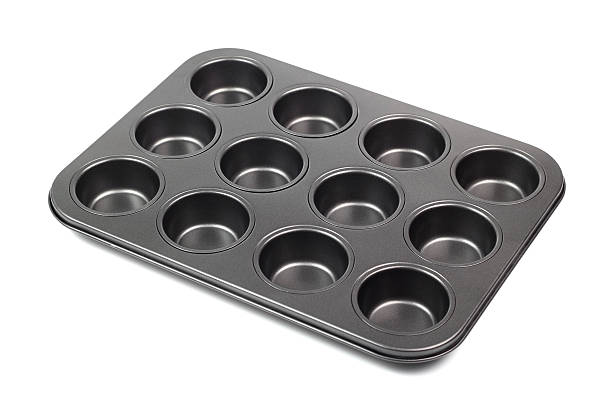
Cleaning and Storage Guidelines
- Hand Washing: To prolong the life of your muffin pan, it’s best to hand wash it rather than putting it in the dishwasher. Use warm, soapy water and a non-abrasive sponge or cloth to clean the pan thoroughly, paying attention to any stuck-on batter or residue.
- Avoid Harsh Cleaners: Avoid using harsh abrasives or metal utensils that could scratch the surface of the pan. Instead, opt for gentle cleaning solutions to preserve the integrity of the pan’s non-stick coating.
- Drying: After washing, thoroughly dry the muffin pan with a clean towel or allow it to air dry completely before storing. Moisture left on the pan can lead to rust or corrosion over time.
- Storage: Store your muffin pan in a dry, cool place away from direct sunlight and heat sources. Avoid stacking heavy items on top of the pan, as this could cause warping or damage to the pan’s structure.
Longevity: How to Make Your Muffin Pan Last
- Avoid Extreme Temperatures: Do not subject your muffin pan to extreme temperature changes, such as placing it directly from the oven into cold water. Rapid temperature changes can cause warping or damage to the pan.
- Use Proper Utensils: When removing muffins from the pan, use silicone or wooden utensils rather than metal ones, which can scratch the surface of the pan and diminish its non-stick properties.
- Re-season as Needed: If you have a seasoned cast iron muffin pan, periodically re-season it to maintain its non-stick properties. To season the pan, coat it with a thin layer of vegetable oil and bake it in a preheated oven for an hour. Allow the pan to cool before wiping off any excess oil.
Common Mistakes to Avoid
- Overfilling Muffin Cups: Avoid overfilling the muffin cups, as this can cause the batter to spill over the edges and stick to the pan, making it difficult to clean.
- Using Metal Utensils: Avoid using metal utensils or abrasive scrubbers to remove muffins from the pan, as this can scratch the surface and damage the non-stick coating.
- Neglecting to Grease or Line the Pan: Always grease or line the muffin pan before adding batter to prevent muffins from sticking and ensure easy removal.
By following these maintenance and care guidelines, you can prolong the life of your muffin pan and enjoy perfectly baked muffins for years to come.
Innovative Muffin Pan Hacks and Recipes
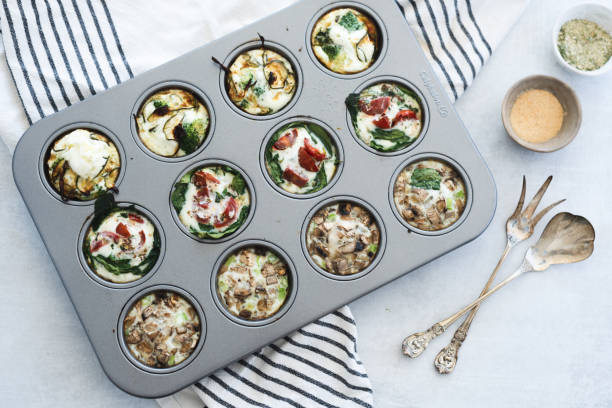
Egg Muffins
- Beat eggs with your favorite ingredients such as diced vegetables, cooked bacon or sausage, cheese, and herbs.
- Pour the mixture into greased muffin cups and bake until set.
- These make for convenient grab-and-go breakfasts or protein-packed snacks.
Baked Oatmeal Cups
- Mix rolled oats with milk, eggs, sweetener, and flavorings such as cinnamon or vanilla extract.
- Add in your choice of mix-ins like dried fruit, nuts, or chocolate chips.
- Spoon the mixture into greased muffin cups and bake until golden and firm.
- Serve warm with a dollop of yogurt or drizzle of honey for a hearty breakfast or snack.
Muffin Tin Pizzas
- Press store-bought pizza dough into greased muffin cups, ensuring it covers the bottom and sides.
- Fill each cup with pizza sauce, cheese, and your favorite toppings such as pepperoni, mushrooms, or bell peppers.
- Bake until the crust is golden and the cheese is bubbly.
- These mini pizzas are perfect for parties or a fun family dinner.
Ice Cream Cookie Cups
- Press cookie dough into greased muffin cups, forming a cup shape.
- Bake until the edges are golden and set.
- Allow the cookie cups to cool completely, then fill each cup with a scoop of your favorite ice cream.
- Top with whipped cream, chocolate sauce, and sprinkles for a delightful dessert.
Stuffed Muffins
- Fill each muffin cup halfway with batter.
- Add a spoonful of your favorite filling such as jam, peanut butter, Nutella, or cream cheese.
- Cover the filling with more batter until the cups are two-thirds full.
- Bake until the muffins are golden and a toothpick inserted into the center comes out clean.
- These surprise-filled muffins are sure to delight your taste buds.
Muffin Tin Mac and Cheese Bites
- Cook macaroni according to package instructions and drain.
- In a bowl, mix the cooked macaroni with cheese sauce and stir until well combined.
- Spoon the mac and cheese mixture into greased muffin cups and sprinkle with breadcrumbs.
- Bake until golden and crispy on top.
- These bite-sized mac and cheese treats are perfect for parties or as a kid-friendly snack.
Frozen Yogurt Bites
- Mix together Greek yogurt with honey and vanilla extract.
Pour the mixture into greased mini muffin cups and top with fresh fruit, granola, or nuts. - Freeze until set, then pop the yogurt bites out of the pan and enjoy.
- These frozen treats are a refreshing and healthy snack option.
Get creative with your muffin pan and try out these innovative hacks and recipes for delicious and versatile treats!
Comparing Muffin Pans: Which One is Right for You?
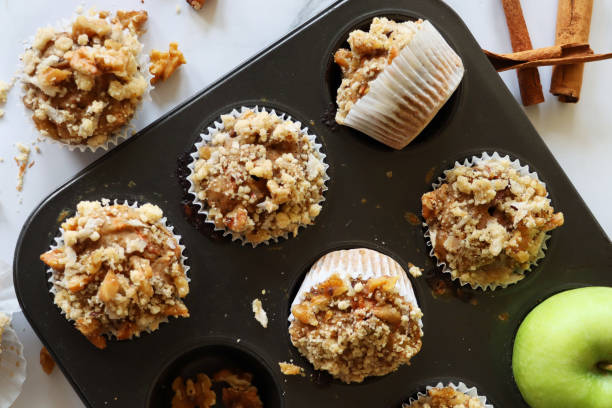
When choosing a muffin pan, there are several factors to consider, including material, size, and special features. Here’s a comparison to help you decide which type of muffin pan is right for you:
Material
- Aluminum: Lightweight, durable, and offers excellent heat conductivity for even baking. Often comes with a non-stick coating for easy release of muffins.
- Steel: Heavier and more durable than aluminum, providing excellent heat retention. May or may not have a non-stick coating.
- Silicone: Flexible, non-stick, and easy to clean. Can withstand a wide range of temperatures and is dishwasher safe.
Size
- Standard: Typically comes with twelve cups, suitable for baking regular-sized muffins. Also available in six-cup pans.
Mini: Features twenty-four cups for baking bite-sized muffins. Ideal for parties, brunches, or snacking.
Jumbo: Comes with six cups for baking oversized muffins, perfect for indulgent breakfasts or hearty snacks.
Special Features
- Non-Stick Coating: Makes it easier to release muffins from the pan and simplifies cleaning.
- Multiple Shapes: Some pans come in unique shapes such as hearts, stars, or flowers, adding a decorative touch to homemade muffins.
- Inserts or Dividers: Allows for the creation of filled or layered muffins, such as those with a cream cheese or fruit filling.
Durability and Longevity
- Consider the durability of the material and the quality of construction to ensure your muffin pan will last through many uses.
Price
- The price may vary depending on the material, size, and brand of the muffin pan. Aluminum pans are typically more affordable, while silicone pans may be pricier but offer added flexibility and convenience.
Personal Preference
- Ultimately, the right muffin pan for you depends on your baking preferences, the types of recipes you enjoy making, and your budget.
Concisely, when comparing muffin pans, consider factors such as material, size, special features, durability, price, and personal preference to determine which type of muffin pan best suits your needs. Whether you prefer traditional aluminum pans, versatile silicone pans, or specialized jumbo or mini pans, there’s a muffin pan out there to help you bake delicious treats with ease.
Sustainability and Eco-Friendly Alternatives

When considering sustainability and eco-friendly alternatives in muffin pans, several factors come into play:
Materials
- Look for muffin pans made from sustainable materials such as recycled aluminum or steel. These materials have a lower environmental impact compared to virgin materials.
- Silicone muffin pans can also be considered eco-friendly as they are durable and reusable, reducing the need for disposable paper liners.
Non-Toxic Coatings
- Choose muffin pans with non-toxic coatings that are free from harmful chemicals such as PFOA, PFOS, and BPA. Opt for ceramic or plant-based coatings that are safer for both human health and the environment.
Longevity and Durability
- Invest in high-quality muffin pans that are durable and built to last. A well-made muffin pan can be used repeatedly for many years, reducing the need for frequent replacements and minimizing waste.
Multi-Purpose Design
- Look for muffin pans that can be used for multiple purposes beyond baking muffins, such as making mini quiches, frittatas, or frozen treats. A versatile pan reduces the need for additional kitchen gadgets and promotes resource efficiency.
Reusable Liners
- Consider using silicone or fabric liners as an eco-friendly alternative to disposable paper liners. These reusable liners are washable and can be used multiple times, reducing waste and saving money in the long run.
Proper Care and Maintenance
- Extend the life of your muffin pan by following proper care and maintenance practices. Hand wash the pan with mild detergent and avoid using harsh abrasives or metal utensils that could damage the surface.
End-of-Life Consideration
- When it’s time to dispose of a muffin pan, consider recycling it if possible. Aluminum and steel pans are recyclable materials that can be melted down and repurposed into new products.
By considering these factors and choosing sustainable and eco-friendly alternatives, you can reduce your environmental footprint while still enjoying the convenience and versatility of muffin pans in your kitchen.
Frequently Asked Questions (FAQs) – What Is A Muffin pan
Q: What is a Muffin Pan and How Does It Elevate Baking Adventures?
A: Delve into the world of baking excellence with our guide to the versatile muffin pan. Learn how this simple tool can transform your culinary creations into works of art.
Q: Why Should I Invest in a Muffin Pan for my Kitchen?
A: Discover the myriad reasons why adding a muffin pan to your kitchen arsenal is a game-changer. From effortless baking to endless recipe possibilities, explore the benefits today!
Q: How Can a Muffin Pan Enhance My Cooking Experience?
A: Uncover the secrets to elevating your cooking journey with the inclusion of a muffin pan. From perfect portion control to effortless cleanup, see how this kitchen essential can revolutionize your time in the kitchen.
Q: What Creative Recipes Can I Try with a Muffin Pan?
A: Unleash your culinary creativity with our collection of inventive recipes designed specifically for the muffin pan. From savory delights to sweet treats, there’s something for every palate to enjoy!
Q: What Makes a Muffin Pan a Must-Have Kitchen Tool?
A: Explore the unique features and functionalities that make the muffin pan an indispensable asset in any kitchen. From its durable construction to its versatility, discover why it’s a must-have for culinary enthusiasts everywhere.
Q: How Can I Make the Most of My Muffin Pan for Healthy Eating?
A: Dive into the world of nutritious cooking with tips and tricks for using your muffin pan to create wholesome meals and snacks. Discover how this simple tool can aid in your journey towards a healthier lifestyle.
Q: What Are Some Surprising Uses for a Muffin Pan Beyond Muffins and Cupcakes?
A: Uncover the unexpected ways you can utilize your muffin pan to create a wide range of delectable dishes. From mini quiches to frozen treats, expand your culinary horizons with our innovative ideas.
Q: How Does a Muffin Pan Simplify Baking for Beginners?
A: Embark on your baking journey with confidence as we explore how a muffin pan can simplify the process for beginners. From foolproof recipes to easy cleanup, discover how this kitchen essential makes baking a breeze.
Q: Can a Muffin Pan Help with Meal Prep and Portion Control?
A: Learn how incorporating a muffin pan into your meal prep routine can streamline the process and promote healthier eating habits. Discover how easy portion control can be with this handy kitchen tool.
Q: What are Some Tips for Cleaning and Maintaining a Muffin Pan?
A: Ensure your muffin pan remains in pristine condition with our expert tips for cleaning and maintenance. From removing stubborn stains to preventing rust, learn how to care for your muffin pan for years of baking bliss.
Conclusion
In conclusion, a muffin pan is an essential tool in the kitchen, designed specifically for baking muffins, cupcakes, and other small baked goods.
Its unique structure, typically consisting of individual cups, ensures even baking and uniform shape, making it indispensable for both amateur bakers and professional chefs alike.
With its versatility and convenience, the muffin pan adds creativity to culinary endeavors and serves as a fundamental component in the art of baking, empowering individuals to explore endless possibilities in the realm of sweet and savory treats.
Other Articles You May Also Like:
- What Is A Dutch Oven (8 Cool Facts To Know)
- What Is A Tart Pan (3 Surprising Facts)
- What Is A Tube Pan – Tube Pan Vs Bundt Pan
- What Is A Broiler Pan (4 Secret Things)
- What Is A Tilt Skillet (4 Cool Facts To Know)
- What Is A Baking Pan (3 Amazing Things To Know)
- What Is A Jelly Roll Pan – Size, Types & Buying Guides
- What Is Grill Pan (4 Surprising Facts)